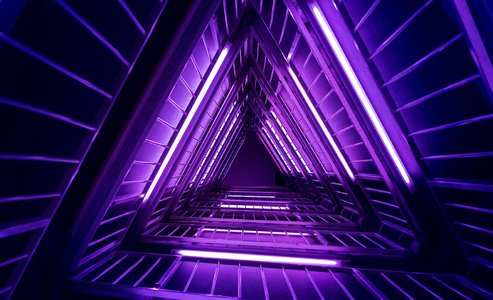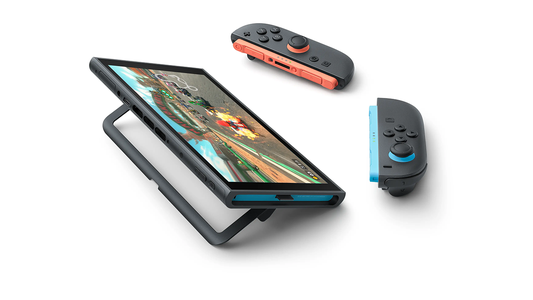Mike Morrison, the driving force responsible for sci-fi adventure Prominence, has agreed to provide us with insight into the excitingly exhausting world of creating one of the most ambitious indie adventure games of late. It's a game that's been in development for 9 years, and it manages to be both detailed and epic.
How would you describe Prominence?
Prominence is a first-person point-and-click science-fiction adventure about a colonization mission gone terribly awry. The player finds themselves in the midst of the crisis, and it's up to them to discover what happened and then decide what they want to do about it.
By exploring the environments and completing puzzles, the player will find clues -- emails, voicemails, audio recordings, and more-- which can help them reconstruct events from the time when things were proceeding as planned, to the first moments of disaster, and then through the ensuing aftermath.
They'll also meet and get some help from the mission's AI, and can follow the storylines of several crew members. In addition, they also have their own story that unfolds alongside the main narrative.

Would you mind telling us a bit about yourself and your game development history so far?
Sure. I'm Mike Morrison, owner of Digital Media Workshop. I left the corporate world of tech publishing and started a multimedia production company in 1997 with a focus on music production, audio engineering, and composing. My corporate background in print and web design was also helpful to many clients, so I kept that in the mix, and then in 2000 I began delving into video and 3D design/animation.
One of my first studio clients was Acclaim Entertainment here on Long Island. I worked on localized manuals for their international releases of games like Constructor, Extreme-G, Forsaken, Turok, Re-Volt, Shadowman, and a few others. I had no idea at the time that I'd end up in game development, but it was one of the steps along the way.
By 2006, the studio was feeling pretty well-rounded, and I was looking for an interesting way to showcase its capabilities. I thought it might be cool to do some kind of interactive walkthrough/demo, and that idea ultimately evolved into Prominence.
I've also produced art and audio assets for a few other indie studios (under NDA), and created some art assets for the point-and-click horror adventure, Serena.

How would you describe Prominence to a seasoned adventurer? To a science fiction fan?
To a seasoned adventurer, I'd describe Prominence as a game that offers a nice variety of traditional inventory puzzles, GUI / logic puzzles, environmental puzzles, and even text-based puzzles. They all tie directly into the narrative in their form and function, so there's no need to make a fishing rod out of a stethoscope, a breadcrumb, and piano wire in order to feed an alien piranha or anything like that.
Seasoned adventurers might also be interested to know that the game offers a first-person view and animated exploration like the later Myst (III and IV) games, Zork: Grand Inquisitor, Morpheus, and Obsidian, because we feel like it really puts you into the shoes of the protagonist and provides the best chance for the player to really connect with the content of the game.
To a science-fiction fan, I'd say it's an experience in the vein of films like Moon or Solaris, where events unfold in a limited, lonely, remote setting with only a few lead characters present, and that it requires the ingenuity and problem-solving from something like The Martian.
What was your design process?
I wanted to surround myself with people who were smarter and more talented than me, and then collaboratively design, iterate, and problem-solve our way through development.
The core production team was comprised of Kevin [McGrath], Tom [Griffith], and me. Kevin and I collaborated on the story, puzzles, features, and the overall game design. He handled all the programming. Tom and I worked together on all the sound effects, voice-overs, and music cues. I was responsible for the art, and brought in some contract help to nail down some of the designs.
There wasn't any isolation between departments. The whole team, for example, was involved in the approval process for the voice-actors. Tom jumped in on story development to help with some dialog and plot points. Kevin was always ready to provide feedback about art and audio. Everyone had access to builds and could offer feedback on anything, whether they loved it or felt that it needed revision.

How long did you work on the game?
Research, story development, and pre-production began in 2006. Kevin joined me later that year, and Tom came on-board in mid-2007.
I should clarify that our development schedule was atypical, though, because Prominence was developed while the studio was concurrently doing client work. I don't know how many other studios take that approach. Some weeks only saw 10 hours of Prominence time, while other weeks would get 40 hours or more.
So, if an adventure game would normally take 3 years at 40+ hours/week, that would be 12 years at 10 hours/week. We came in around 9 years.
It could have been quicker, but we also moved the goalposts several times, explored all kinds of additional design / puzzle / character ideas, and allowed quite a bit of feature creep. We gave ourselves lots of freedom to make the game we wanted.
That let us treat Prominence almost like going to school. Kevin had programmed for more than 20 years, but hadn't worked with OpenGL, multithreading, shaders, or coding for audio. Tom had released several albums, worked on dozens of records, and had an award-winning career in jingles, but had never really played a computer game, let alone scored or done sound design for one. I had produced 3D assets and animations for clients, but nothing on the scale of the 100+GB and 65,000+ rendered frames of art and animation that helped create Prominence.
That's one of the reasons the game was self-funded instead of going to Kickstarter or other crowdfunding platforms. We didn't want to have to justify delays to investors or financial supporters while pursuing the ideal version of the game.
Could you provide us with a rough timeline / making of?
A rough timeline of major milestones probably goes something like this:
Research, story development, and pre-production: 2006-2008
Engine development: 2008-2010
Production: 2010-2015
Post-production: 2015
Originally, we were going to use a heavily modified version of the SCream engine (from Scratches). Agustín [Cordes] is a good friend of ours, and we all thought it would be cool to update the engine and then release it to adventure devs everywhere. But then Nucleosys changed hands, and we realized that we had a laundry list of features that we wanted in Prominence that would have been hard to shoehorn into that code, so we had to re-think that plan.
[It's worth noting that Agustín later revisited the idea of making an open-source node-based adventure engine with Dagon.]
In late-2007 there was no Unity like there is now. Heavy hitters like Unreal, the Source engine (powering Half-Life 2 at the time), and id Software's engine for Doom 3 were six-figure investments -- completely out of our reach.
The indie-level offerings at the time were things like Torque, Blitz, Gamestudio, and a few adventure-specific options like AGS and Wintermute. But nothing was really geared toward first-person node-based adventures, so we decided to build it ourselves.

Would you give us some insight on the artistic direction of the game and its graphics?
We knew that we wanted the environments to change a bit from one area to another as the player explored the game. We found a way to connect that idea into the story through the chunky, industrial-style look of the Taeron equipment, and the more refined and rounded look of the Letarri technology.
I made up a reference document of the various techs that would appear in the game, and worked with a concept artist to take that information and turn it into a photo-based art vision doc with design references and inspirations. This helped form the visual foundation language of shapes, concepts, and colors for each tech.
From those initial pieces, I was able to design a few key environments (like the hallway scene shown here), some props, and many of the inventory items. As we got further into development, though, I was wearing hats for story, puzzle design, testing, sound effects, music, voices, website, press, marketing, etc.
I didn't want the art to suffer, so I contracted my friend Gary [Ritchie], who I had met while working on a 3D animated commercial for a Mars colonization project with the PixelCorps in 2005. He looked at the art vision docs and set up a TRAC server. He made dozens, if not hundreds of drawings, and we churned out scores of models and room layouts in just a few months.
After we wrapped that up, I felt much better prepared to build the rest of the art for the game.
Its sound and music?
We just released a developer chat about this very subject! But I'll talk about a few things here that aren't in that dev chat. :)
Just like the art, I knew the game would turn out better if I didn't try to do it all myself. Tom is a gifted musician and arranger, and he's produced and worked with world-class acts. We've collaborated on projects for many years, and I knew his unique sensibilities would be a tremendous asset.
I had two strong thoughts about the music: First, I found that submarine movies were a powerful metaphor for the dangers of space travel. There's a crew packed into an enclosed space on a mission and if something goes wrong, the environment right outside the hull is just waiting to kill them.
There's so much humanity in those films, and many of them use choirs as a collective voice of the crew. There's something almost haunting about it. The power of the voices amid the murky depths creates a mood that's really unlike anything else. It conveys so much so quickly.
In our case, the choir doesn't just represent the crew; it really echoes the soul of the Letarri people as a whole because the stakes of the mission are so high.
The second was Cliff Martinez' score for the 2002 film Solaris. It's full of mystery, wonder, technology, a bit of trepidation... and yet it's so understated. That kind of emotive but almost minimalist score is where I wanted us to land. We have more than 20,000 words in Prominence. Probably at least a third of them are spoken, and the player needed to be able to read or listen to them without strong musical distraction.
So if you listen to the soundtrack (it's included as a free bonus with the game), the longer ambient music cues are very open, but they have echoes and bits of the choir's main melodic theme that work their way in and out at various times to help tie everything together.
Then we worked to shift the tone and mood of the music as the player progresses through the game, to reflect the emotion of each stage of the adventure.
What were you seeking to achieve with Prominence? Do you think you've accomplished your goal?
It started out as a demo reel and ended up becoming a full-fledged adventure game. It might still lead to lots of new and interesting work for the studio. Or it might do well enough that we can make game development a new operational branch and release more of our own titles.
We completely exceeded the original goal and, like I said earlier, we metaphorically went to school on this project and learned a lot of new things along the way. Now we've got more skills and more knowledge of how to use them.
So yes, we accomplished the goal, b
No tags.





































